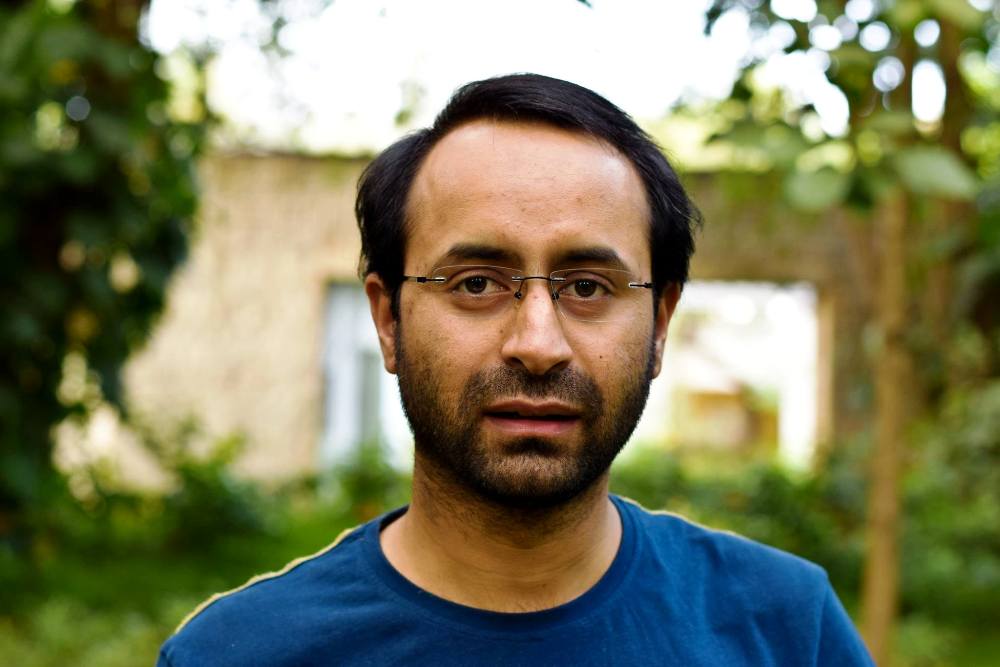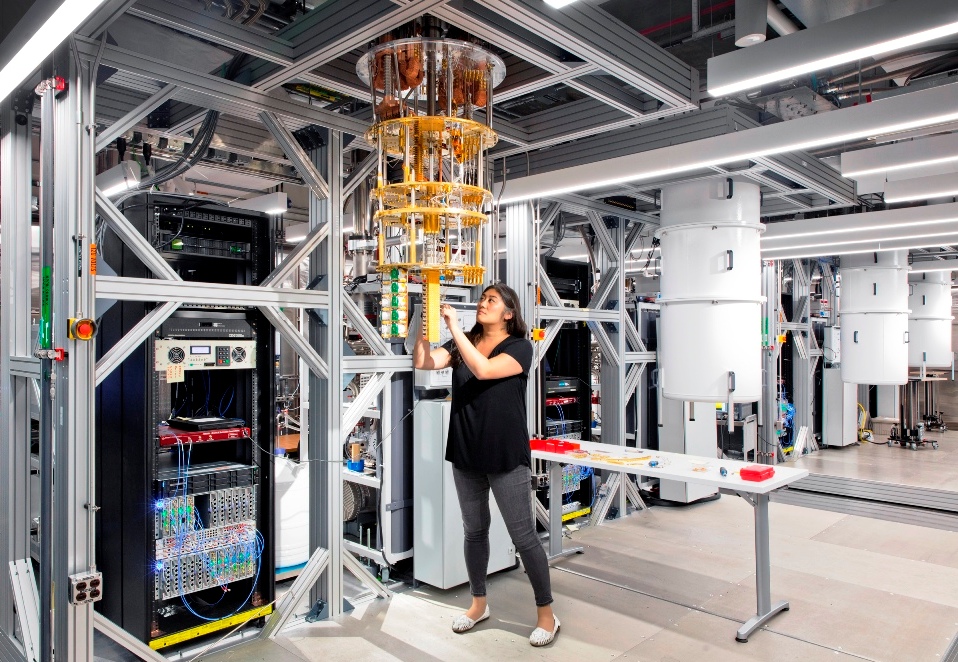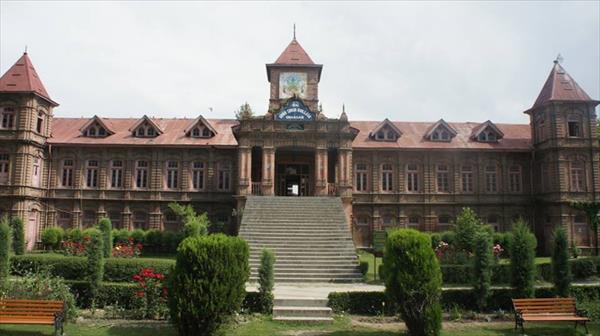Kashmir’s young quantum physicist, Rukhsan ul Haq tells Khalid Bashir Gura his long story from a dusky central Kashmir village to the IBM Quantum, explaining how mankind’s quest for understanding nature is giving machines basic jobs in order to spare creativity and exploration for the human mind
As the Covid-19 pandemic literally invaded earth, the world looked towards science for solutions against the fast mutating virus. Amidst its proliferation and initial mortality rate, mankind was desperate for the vaccine. But before providing an antidote it required understanding the invisible contagion. Institutions networked their giant computers to create supercomputers for understanding the genome of the virus. Supercomputers decoded the genome but they had their own limitations. It was the point when quantum computers took over.
Every form of life has a peculiar genetic code, the DNA that comprises a complex pattern of proteins. The human genome, for instance, has 3.2 billion bases of DNA, which, if printed, could become a 61-meter high stack of books that would take a century to read at the speed of a word per second. Reading these highly complex codes in the shortest time and offering an idea about how the molecules could pattern in the genetic helix requires high-power computers. So the spot where supercomputers slow down, quantum computers take over and help understand protein sequencing in the longest chain of life genome.
“We are in the infancy stage of quantum computing,” said Rukhsan-ul-Haq, a quantum physicist who is a Quantum AI Scientist at IBM Quantum, the American tech giant that gave the first computer to the world in 1981, and the first to build a Quantum Computer. “These complex machines did help in understanding the virus better.”
Though quantum computing is still in its infancy, the race is already there. With a 127-Qubit quantum computer, IBM apparently has the world’s most powerful quantum computing system. Google AI Quantum has a 53qubits, quantum computation facility and now Chinese scientists claim their Jiuzhang 2 can compute calculations at least 100 trillion times faster than Google Sycamore. The race is on.
Learning Curve
Before Dr Rukhsan became Kashmir’s first quantum physicist to join IBM Quantum, the tech giant’s quantum computing vertical, he had worked for years to understand and explore quantum physics. With data science (ML, DL, and AI) and quantum computation as core areas of his research and business interest, he is currently working on quantum AI, Quantum Natural Language Processing (QNLP), Quantum simulations and machine learning/deep learning.
“I have a strong background in theoretical, computational, and programming aspects of machine learning and deep learning and have carried out research on topological quantum computation with a proven track record for creating intellectual property and playing the leadership role of incorporating new ideas and techniques,” Rukhsan said.

A resident of Wadwan in Budgam, when Rukhsan was in twelfth class, Physics and Mathematics enamoured him. Unlike his contemporaries who failed to resist societal and parental pressure to choose conventional careers, Rukhsan decided to study both subjects after school level. However, he had to face commonplace hiccups.
“As I joined Amar Singh College for bachelors in science, I was unable to get admission in mathematics because I had not opted for mathematics at higher secondary where I studied biology,” Rukhsan said. “Nevertheless, I convinced them.”
The limitations of the education system did not hinder his pursuits and progress, however. Even though his teachers were not able to help him technically, their experience and college library college helped him in expanding the canvass of concepts.
After his graduation, Rukhsan hoped to transcend the geographical and resource limitations in his academic career by studying abroad. However, his parents did not approve of the idea for various reasons. He soon came to terms with the idea of taking his passion to next level at the University of Kashmir.
“I studied quantum mechanics at Kashmir University. I was bewitched with its idea of mathematical beauty and conceptual structure,” Rukhsan said crediting his two years for helping him plug loopholes in properly understanding the quantum concepts.
Soon, he developed clarity in pursuing research as a career. He went to Bangalore where he got admission at Jawaharlal Nehru Centre for Advanced Scientific Research (JNCASR). He considers himself fortunate for getting a capable supervisor, Prof NS Vidyadhiraja, who provided all the freedom and support for pursuing new areas of research. In six years, he completed his PhD in quantum condensed matter physics.
Rukhsan said he had come across a book on quantum computing during his college years. But it was during his research he explored quantum computing. “I wanted to pursue research in quantum computing but had to ultimately settle down somewhere closer to it. I started exploring the topological quantum computing,” Rukhsan said. “During my PhD, I collaborated with two leading quantum physicists: Prof Louis H Kauffman, from University of Illinois, Chicago and Professor Michel Planat from France and with them, I made some important contributions to quantum computing”.
Topological Protection
The spark of talent in him was ignited by his research guides with whom he shared many contributions during his research.
The mind-boggling quantum computing capacity does not work at room temperature. Existing quantum computers, such as those at IBM, and more recently Google and Microsoft, have to be kept at ultra-low temperatures of –196.1°C, polar opposite to classical computer’s hard drive fans. This, he says is unlike classical information on hard drives of computers which is safe until physical damage is done to the hard drives.
“The fragile quantum information requires careful handling when it comes into interaction with the environment. The coherence level has to be maintained in order to prevent loss of quantum information which may lead to quantum decoherence,” Rukhsan explained. Though it can be maintained by applying thermodynamic laws but the real challenge is to prevent the loss of information through other sources of noise and make quantum computation smooth.

During the research, Rukhsan in joint work with his long-term collaborator, Prof Kauffman, proposed a new methodology to preserve information, what he calls preserving precious pearls through topological protection. “This was one of my main outcomes and a contribution during research,” he said. “The method is in vogue now.”
Unlike the classic computers in which the information is stored in bits, the quantum computing system uses a completely different set-up called qubits. Eight bits, for instance, is enough for a routine computer to represent “any number between 0 and 255”. Eight qubits, in comparison, can represent “every number between 0 and 255” at the same time. This adds massive capacity to quantum computing to the extent that a few hundred entangled qubits could represent “more numbers than there are atoms in the universe”.
As some parts of quantum computing can be simulated on classical computers, scientists in order to tackle simulation introduced a technique called magic state. “It is to create qubits on the quantum computer which cannot be simulated on any classical computer of world. These states are called magic states. I along with my guide Professor Mitchel Planat worked on these magic states for the quantum computing world,” he said.
Mathematical Method
Recounting his third contribution, he said that one of the textbooks written by IBM on quantum computing for users worldwide has a chapter to his credit in it is being taught now. “We gave a mathematical model to understand a qubit in a superconductor device. Technically it is called Schrieffer-Wolff transformation,” Rukhsan said. There is a reference to his paper in the book detailing the method in chapter six. (https://qiskit.org/textbook/ch-quantum-hardware/cQED-JC-SW.html)
Meanwhile, as his journey from student to scholar was coming to an end, Rukhsan was not comfortable in his comfort zone. The stagnation scared him. As he was living his dream of being a scientist and finding himself shoulder to shoulder with great scientists, he was filled with admiration and confidence for himself as he recalls his not-so-easy journey from his village to IBM.
Futuristic
After completing his doctorate degree, pressures resumed suggesting he return and serve back home. “I am more research-oriented and wanted to stay abreast with the latest developments,” Rukhsan said, insisting that he had to resist the temptations and pressures. During his research, he was fascinated by the idea of Artificial Intelligence (AI) and machine learning. He wanted to explore it and shift from academia to industry as machine learning, though fledgling captivated him.
“I wanted to be somewhere in the big league of IBM, Google, and Microsoft who contribute immensely to research,” Rukhsan said.
First Foray
Post-PhD, Dr Rukhsan started working in the area of machine learning, the first opportunity that knocked on his door was from Johnson’s and Johnson’s .“I became lead data scientist in the project aimed at developing a forecasting platform for the company so that it manages its demand and supply chain better,” Rukhsan said. “The company’s conventional model of forecasting was resulting in losses as they were unable to predict abruptly surge in demand.”
The company while assessing its weaknesses realized the need for an AI-based forecasting model. Rukhsan had all the skills for creating this platform. When the product was finally applied, it led to a significant business impact. The appreciation for predicting demand accurately up to 90 per cent gave him the confidence to aim higher.
IBM
By then, Rukhsan was in Bangalore when another opportunity knocked at his door. He started looking for opportunities. “The IBM was looking for people based in Bangalore, having the quantum computing background, knowing AI and some industry experience,” Rukhsan said. It led him to land in IBM Quantum. “Currently, I am a quantum AI scientist. I do research, implement it, and also work on plans to enhance and upgrade the technology in software technology,” Rukhsan said. Illustrating his role by Covid-19 pandemic, he said there is a need to develop forecasting models, which can predict future pandemics. The forecasting models should be ready so that they can be run on a quantum computer in different fields of science.
Material Simulation
Many core quantum materials used in modern technology can be understood and developed with the help of quantum computers.
Nobel Prize-winning physicist Richard Feynman, Rukhsan said, had laid stress that any quantum material cannot be computed on a classical computer and needs a quantum computer. “In one of the conferences in the 1980s by IBM and MIT, Feynman had stressed the need of inventing and developing the quantum machine which can help in understanding quantum materials of different fields of science,” he said as this had acted as a motivational force to invent it.
As machine learning models are complex, they need highly sophisticated computing powers. “We have three levels of processors: CPUs, GPUs, and TPUs. CPU (central processing unit) is a generalized processor that is designed to carry out a wide variety of tasks.GPU (graphics processing unit) is a specialized processing unit with enhanced mathematical computation capability, ideal for computer graphics and machine-learning tasks. And TPU (tensor processing unit) is the latest invention, designed by Google in 2016 for use with neural networks and in machine learning projects,” he said.
Google uses TPU’sservers and utilizes its services for computing. However, it is expensive and leaves carbon footprints. To tackle its various limitations, he said, the domain of Quantum AI is of great help.“The quantum AI models are more efficient in terms of computing, consume fewer resources, and are faster and simpler,” Rukhsan said. Explaining the ease and efficiency of AI models, he said that medical images can be processed through the models and help overcome the limitations of its predecessor computing models.
Quantum Nature Language Processing
A component of AI, NLP essentially improves the relationship between people and their machines by enabling systems to more easily understand human language and decipher the meaning of the words and phrases used. “Most of our textual data like SMS’s, mail’s, news and other forms of texts can be processed through text modelling. Due to paucity of time, we can summarize the particular segment of a newspaper for us,” he said.
According to him, QNLP overcomes the limitations of classical NLP. “Quantum AI can also help understanding climate change. Mathematically, the climate is not easy to understand due to its non-linear system and there are complicated relationships between different variables,” he said.

Towards Miniaturization
Even though quantum computers may in the future look like today’s computers, Rukhsan said the classical computers will never be trashed. “They both will work in tandem and according to their strengths. Today’s quantum computers in the US can be accessed virtually from Kashmir by opening an account on IBM cloud,” Rukhsan said. “The Quantum Computers are not portable like classical ones, but in future, they see some miniaturization as technology is a continuous process,” he said. “Till then, people can access these giant immovable machines from their classical computers using remote login via cloud computing.”
As the world is getting more digitized, the scientist believes that quantum computers will ensure more secure financial transactions than classical computers and enhance cyber security. “People have started working on securing the virtual world,” Rukhsan said as people can access it freely, especially on IBM.
Replacing Humans
Since life was completely revolutionized by industrial revolutions, the third and fourth; in the last decade, AI is finally the new in-thing. “Earlier, the jobs performed by humans manually are now done by machines. But in AI, the intention is not to replace humans but enhance human efforts. It is to overcome manufacturing defects as humans are prone to error,” Rukhsan said. “Machines, unlike humans bring precision in manufacturing and other processes.”
Rushkan does not disagree with the dire prognosis that AI will replace humans in the job market as automation is revolutionizing the world. But now according to him, if automation may have adversely impacted some sectors of the job market, it is generating jobs also. “Data sciences and Quantum AI area are dynamic and booming job industry unlike a decade ago. These lucrative occupations are considered the trending job of this century.” He dispelled the impression that machine takeover is reducing opportunities as the emerging technologies are creating new jobs at a much faster pace.
Countering fears that AI might replace humans, Rukhsan said these are just pieces of software programmed with learning behaviour. However, in future, as technology evolves and advances, it could become more intelligent than its creator. “It is designed to make life easier for people. We have the internet of things (IoT) these days to make life easy for humanity,” he said.
Sunrise Careers
As many students are blinkered not to choose beyond conventional careers, they despite bagging and piling stacks of degrees are unable to meet skills needed in the job market and end up jobless. Now made robotics, artificial engineering, data science, and quantum computing are the advanced skills that the new generation must start looking at.
“The preparation for the journey should begin by focusing on the subject of mathematics at the school stage,” Rukhsan suggests. “We have to start early and use the internet to stay tuned with the new programming languages, and identify mentors to follow.” People aspiring for careers in quantum computing must understand Physics better and Mathematics too.















